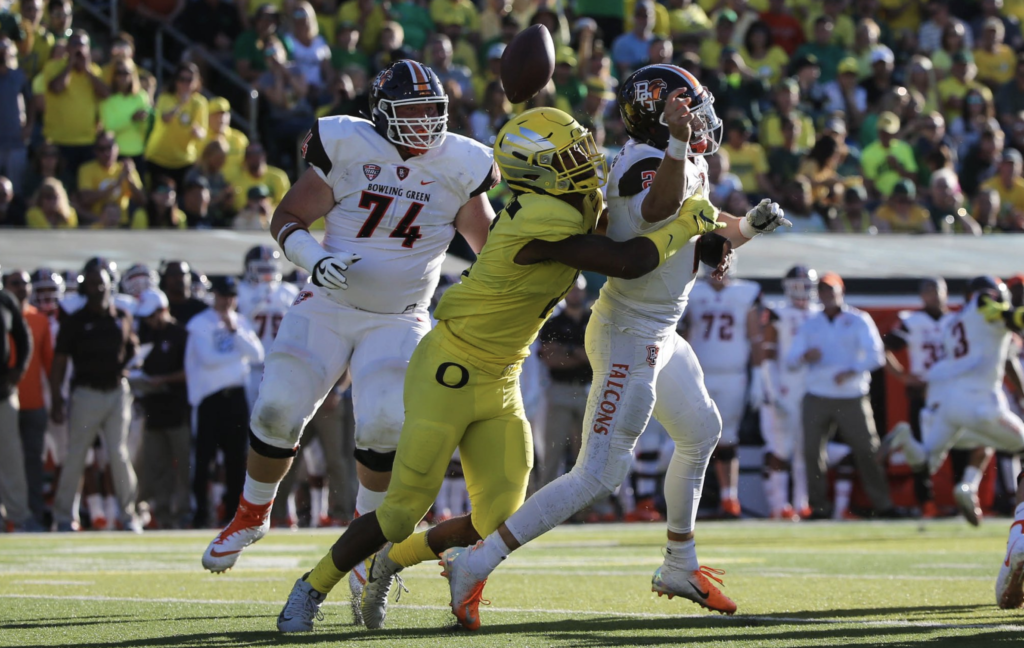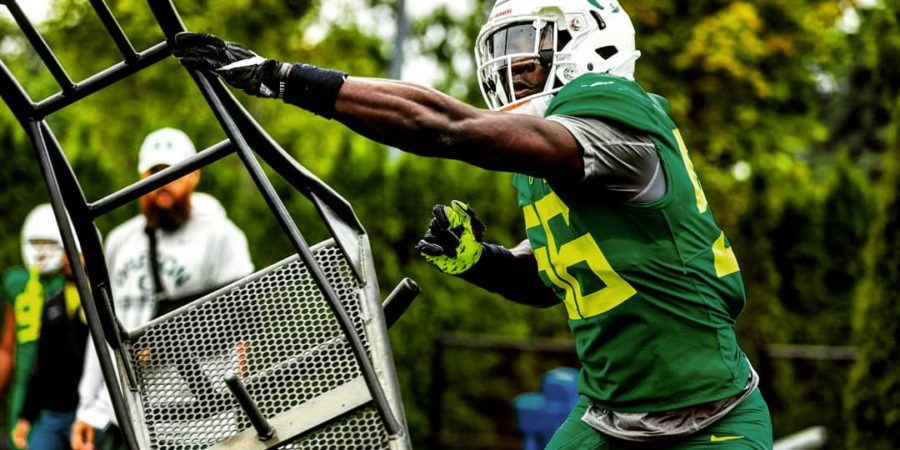A new season means a new defensive coordinator for the Ducks heading into the fall.
Out is Jim Leavitt, a largely beloved character among fans and current players on the Oregon roster who served as the Ducks’ defensive coordinator for two seasons, helping turn a downtrodden defense into a respectable unit before he and the program made the decision to “mutually” part ways this past February.
In is Andy Avalos, a rising star in the collegiate coaching ranks who spent the last three seasons as the defensive coordinator at Boise State molding one of the nation’s most opportunistic defenses. He takes the reins of an Oregon defense that loses three of their most impactful players from last year’s team (Jalen Jelks, Justin Hollins, and Ugo Amadi), but enters the upcoming season with high expectations given the overall wealth of experience and the infusion of young, high-profile talent to the roster.
The question now is, what – if any – difference will we see between a Leavitt-led Oregon defense and an Avalos-led Oregon defense?
The party line coming out of the spring was that Oregon would be “multiple” on defense, with little to no indication as to how the Ducks might align as it relates to a base defense. Under Leavitt the past two seasons, the Ducks primarily operated out of a base 3-4 alignment, but given the depth and wide-ranging body types on that side of the ball for Oregon, it’s difficult to say with any certainty that that will remain the case.
One thing that is more or less guaranteed, however, is the presence of the STUD linebacker position in Avalos’ defense. In his defense, the STUD is somewhat of a hybrid between a defensive end and an outside linebacker – essentially the role played by Jalen Jelks and Justin Hollins the past two seasons under Leavitt.

But with both Jelks and Hollins off to the NFL, who fills that void for Oregon this season?
Before spring practices began, many anticipated that Miami (Fla.) transfer and former four-star recruit D.J. Johnson would be the one to occupy the role vacated by Hollins and Jelks. And he still might, as the Sacramento native not only served as an understudy to Jelks and Hollins last season as he sat out due to NCAA transfer rules, but also possesses freakish athleticism for a 6-foot-5, 270-pound athlete.
Johnson, however, has reportedly been joined in the competition by senior Bryson Young, who has played sparingly during his time in Eugene. Young looks to August hoping to carry a strong performance this spring into fall camp after pinballing between defensive end and outside linebacker for much of his career. Similar to Johnson, Young is an impressive physical specimen who certainly looks the part, but has yet to translate it to notable production.
A pair of true freshmen in Treven Ma’ae and Isaac Townsend could also enter the fray once fall camp kicks off in a matter of weeks. Both players fit the mold for the position, and given the uncertainly at the spot, each should have an honest shot at securing playing time should they hit the ground running once practices begin.
There’s no doubt that questions abound about the promising group that Avalos inherits in his first season as defensive coordinator. And though talented at every level, a key component to Oregon’s success next season will be finding players who can consistently generate pressure, something that was lacking last season even with decorated pass rushers like Hollins and Jelks on the roster. While it won’t be the end all be all to Oregon’s recent inconsistencies rushing the passer, finding a player (or players) who takes ownership of the STUD position should prove to be a critical first step towards that end.

